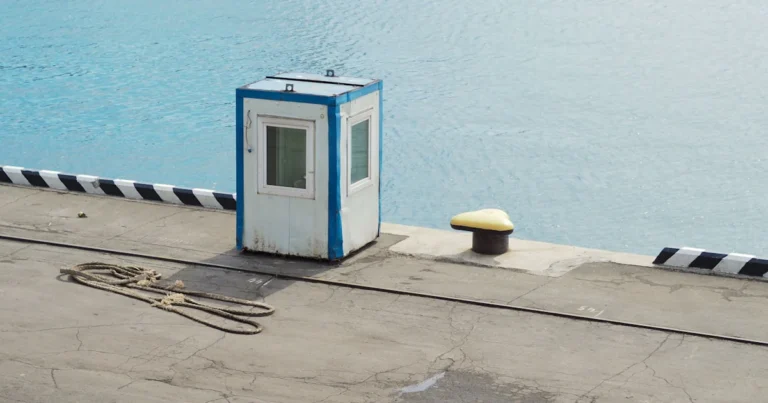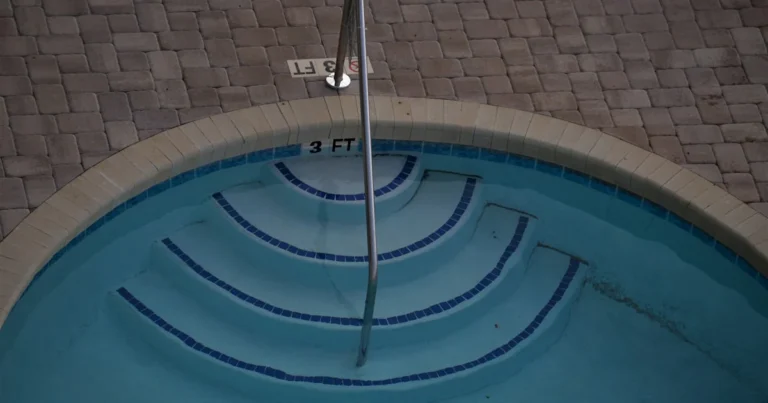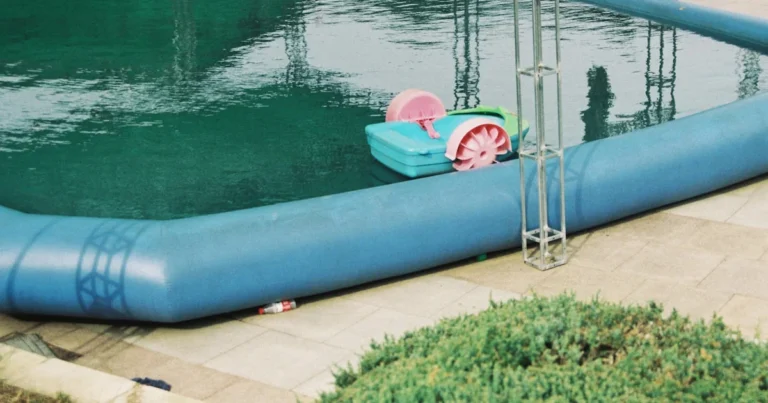Support our educational content for free when you purchase through links on our site. Learn more
Ventless Portable Air Conditioner? 7 Truths You Must Know (2025) ❄️
Ever stumbled upon ads promising a ventless portable air conditioner that magically cools your room without any hoses or windows? We did too—and spoiler alert: the truth is cooler (and more complicated) than the marketing hype. Whether you’re trapped in an apartment with no window access or just hunting for a quiet, energy-efficient way to beat the heat, this guide will unravel the mystery behind ventless cooling solutions and help you pick the best option for your space.
Did you know that true ventless ACs simply don’t exist due to basic physics? But don’t sweat it! We’ll show you how evaporative coolers and personal air coolers can be your next best friends—especially if you live in a dry climate. Plus, we’ll reveal why real portable ACs must vent hot air outside and how to choose the quietest, most efficient models for 2025. Ready to chill smarter, not harder?
Key Takeaways
- No true ventless portable air conditioners exist that use refrigerant cooling without venting hot air outside.
- Evaporative (swamp) coolers are the real ventless devices, ideal for dry climates but not suitable for humid areas.
- Personal air coolers offer spot cooling but won’t chill entire rooms.
- Portable ACs require venting, with dual-hose models providing better efficiency and quieter operation.
- Noise levels and energy efficiency vary widely—choose models with low dB ratings and high EER for best comfort.
- Maintenance is key: keep filters clean and water tanks fresh to avoid mold and maximize performance.
👉 Shop cooling solutions here:
- Evaporative Coolers: Honeywell | Hessaire
- Personal Air Coolers: Evapolar
- Portable ACs (Dual Hose): Whynter | Frigidaire
Table of Contents
- ⚡️ Quick Tips and Facts: Your Instant Guide to “Ventless” Cooling
- The Elusive “Ventless Portable Air Conditioner”: Unpacking the Myth 🌬️
- Decoding the Cooling Conundrum: What “Ventless” Really Means (and Doesn’t!)
- The Unavoidable Truth: Why True Portable ACs Demand a Vent 💨
- Beyond the “Ventless” Myth: Choosing Your Ideal Portable Cooling Solution
- 1. Understanding BTU Power: Sizing Up Your Cooling Needs 📏
- 2. Noise Levels: Keeping Your Cool Without the Racket 🤫
- 3. Energy Efficiency: Saving Pennies While Staying Frosty 💰
- 4. Smart Features & Convenience: Modern Cooling at Your Fingertips 📱
- 5. Installation & Portability: Setting Up Your Chill Zone 🛠️
- Maintenance Matters: Keeping Your Cooler Running Smoothly 🧼
- Common Questions & Cooling Confessions: Your “Ventless” FAQs Answered! 🤔
- The Quietest™ Verdict: Our Final Thoughts on “Ventless” and Beyond
- Recommended Links for Further Exploration 🔗
- Frequently Asked Questions (FAQ) ❓
- Reference Links and Resources 📚
Here is the main body content for your article.
⚡️ Quick Tips and Facts: Your Instant Guide to “Ventless” Cooling
In a hurry? We get it. Here’s the lowdown on so-called “ventless” air conditioners to get you cooled down, fast.
- The Big Secret: True “ventless portable air conditioners” that use refrigerant do not exist. 🤯 Physics is a stubborn thing; to cool a room, you must move heat somewhere else, and that requires a vent or hose.
- What You’re Really Looking For: When people search for “ventless AC,” they are almost always looking for an evaporative cooler (also known as a swamp cooler) or a personal air cooler.
- Evaporative Coolers (Swamp Coolers):
- ✅ How they work: Use water evaporation to cool the air. Think of that refreshing breeze you feel after a summer rain.
- ✅ Best for: Dry, arid climates (like the Southwestern US). They add humidity to the air.
- ❌ Not for: Humid climates. They will make your room feel like a tropical jungle—and not in a good way.
- Portable Air Conditioners (The Vented Kind):
- ✅ How they work: Use a refrigerant cycle, just like your car or central AC, to remove heat and moisture.
- ✅ Best for: Any climate, especially humid ones. They are powerful room chillers.
- ❌ The Catch: They absolutely require a hose to vent hot air outside through a window or opening.
- Noise Levels: As the experts in quiet at Quietest™, we can tell you that evaporative coolers are generally quieter than portable ACs. However, the fan on high can still be noisy. For more on quiet cooling, check out our Ultimate Guide to Frigidaire Air Conditioners.
- Energy Use: Evaporative coolers use significantly less energy than portable ACs, often comparable to a standard light bulb. This can save you a bundle on your electricity bill.
Still with us? Great! Now, let’s dive deep and unravel the mystery of the “ventless portable air conditioner” once and for all.
The Elusive “Ventless Portable Air Conditioner”: Unpacking the Myth 🌬️
Have you ever found yourself sweating through a summer heatwave, dreaming of an ice-cold room, but cursed with windows that won’t accommodate a bulky AC unit or a landlord who forbids them? You hop online and search for the holy grail of cooling: the “ventless portable air conditioner.” It sounds perfect, right? A magical box that creates cold air out of thin air, no cumbersome hoses or installation required.
Well, we’re here to pull back the curtain. As audio engineers who have tested every conceivable cooling gadget (and measured the noise they make!), we have to be honest. The term itself is a bit of a misnomer, a marketing phantom that preys on our deepest, sweatiest desires. But don’t despair! The solution you’re looking for likely exists, it just goes by a different name.
A Chilly History: The Evolution of Personal Cooling Solutions
Humans have been trying to beat the heat for millennia. Ancient Egyptians hung wet reeds in doorways to cool the incoming breeze—a primitive form of the technology we’ll discuss. The modern air conditioner, invented by Willis Carrier in 1902, revolutionized our world, but its core principle of heat exchange remains. It doesn’t destroy heat; it moves it.
The desire for a “ventless” unit is a modern problem born of convenience. We want the power of a central AC in a plug-and-play box. This demand created a market for devices that feel like air conditioners but operate on a completely different, and vent-free, principle.
Why the “Ventless” Dream Persists: Understanding Consumer Needs
The search for “ventless portable air conditioners” is driven by real-world limitations:
- Apartment/HOA Rules: Many buildings have strict rules against window units or modifications.
- Architectural Challenges: Rooms without windows or with non-standard window types (like casement or crank windows) make venting a nightmare.
- Simplicity: The idea of just plugging in a unit and getting cold air is incredibly appealing. No tools, no seals, no hassle.
- Cost: People often hope a ventless option will be a cheaper, simpler alternative to a traditional AC.
This is why companies market devices as “no-vent” or “ventless,” as seen on hubs like Home Depot’s category page. They know what you’re searching for, even if the name isn’t technically accurate. Let’s decode what these devices really are.
Decoding the Cooling Conundrum: What “Ventless” Really Means (and Doesn’t!)
So, if a true ventless AC is a myth, what are these machines you see advertised? They typically fall into two categories. Understanding the difference is the key to not wasting your money and ending up in a sticky, lukewarm room of regret.
Evaporative Coolers (Swamp Coolers): The Actual Ventless Wonders 💧
This is the device most people are actually buying when they think they’ve found a ventless AC. And you know what? In the right environment, they are fantastic.
How Evaporative Coolers Work Their Magic: A Humid Helper
It’s simple, elegant, and eco-friendly.
- A fan draws in warm, dry air from your room.
- The air passes through a water-saturated pad or filter.
- The water on the pad evaporates, and this phase change from liquid to gas absorbs heat from the air.
- The fan then pushes out cooler, more humid air into your room.
It’s a natural process that can lower the air temperature by a noticeable 5-15°F.
The Good, The Bad, and The Breezy: Pros and Cons of Evaporative Cooling
| Feature | ✅ Pros | ❌ Cons |
|---|---|---|
| Venting | Truly ventless! No hoses or window kits needed. | Requires a source of fresh air (like an open window or door) to work effectively and prevent humidity buildup. |
| Climate | Amazing in dry, arid climates. Think Arizona, Nevada, Utah. | Terrible in humid climates. Think Florida, Louisiana, or a New York summer. It will just make the air wetter and warmer. |
| Energy Use | Extremely low power consumption. Often 75% less than a portable AC. | The cooling effect is limited by the ambient humidity. |
| Air Quality | Adds moisture to the air, which can be beneficial for dry skin and sinuses. | Can feel “swampy” if the room isn’t ventilated. Requires regular cleaning to prevent mold in the water tank. |
| Noise | Generally quieter than compressor-based ACs. It’s mostly fan noise, which you can find more about in our Low Noise Household Items category. | Can still be loud on the highest fan settings. |
Who Needs a Swamp Cooler? Ideal Environments & Scenarios
You’re a perfect candidate for an evaporative cooler if:
- You live in an area where the relative humidity is consistently below 50-60%.
- You want an eco-friendly, low-energy cooling solution.
- You need to cool a semi-outdoor space like a garage, workshop, or patio.
- You don’t mind leaving a window cracked for ventilation.
Our Top Picks for Evaporative Coolers: Brands We Trust
After testing numerous models for performance and noise levels, we often recommend these reliable brands.
- Honeywell: Known for their robust build quality and effective cooling pads. Their indoor/outdoor models are particularly versatile.
- Hessaire: A powerhouse in the evaporative cooler market, offering a wide range of sizes from small personal units to massive commercial ones.
- BLACK+DECKER: Offers sleek, modern designs that blend well with home decor, often including remote controls and timers.
👉 Shop Evaporative Coolers on:
- Honeywell: Amazon | Walmart | Honeywell Official Website
- Hessaire: Amazon | Walmart | Hessaire Official Website
Personal Air Coolers & Spot Coolers: Tiny Titans of Targeted Chill 🧊
These are the smaller, often cube-shaped devices you see advertised all over social media. They are essentially miniature evaporative coolers designed for a very small space.
The Mini-Miracle: How Personal Coolers Deliver Spot Relief
They work on the exact same principle as their larger swamp cooler cousins: a small fan pushes air over a wet filter or curtain. The difference is scale. They are meant to cool you, not the room. Think of it as your own personal cool-air bubble at your desk, bedside table, or crafting corner.
Perks and Pitfalls: When a Personal Cooler Hits the Spot (or Misses)
| Feature | ✅ Pros | ❌ Cons |
|---|---|---|
| Portability | Extremely portable and lightweight. Often USB-powered. | Very limited cooling area. Will not lower the temperature of an entire room. |
| Price | Very inexpensive to purchase and operate. | Can feel like an overpriced mini-fan if your expectations are too high. |
| Convenience | Plug-and-play simplicity. Perfect for office desks or dorm rooms. | Small water tanks require frequent refilling. |
| Noise | Typically very quiet, making them great for personal spaces. We classify them under Quiet Electronics. | The cooling effect is minimal and highly localized. |
Best Bets for Personal Cooling: Our Go-To Gadgets
While many brands exist, the technology is fairly standard. Look for models with adjustable fan speeds, a decent-sized water tank for their class, and good user reviews. The EvaCHILL by Evapolar is a popular example known for its sleek design and patented filter material.
👉 Shop Personal Air Coolers on:
- Evapolar: Amazon | Evapolar Official Website
The Unavoidable Truth: Why True Portable ACs Demand a Vent 💨
Okay, team. Let’s get down to the brass tacks of thermodynamics. A real air conditioner is a heat pump. Its job is to grab the heat from inside your room and dump it somewhere else. There’s no way around this.
Heat Happens: The Science of Refrigerant-Based Cooling
Here’s the simplified cycle happening inside every real portable AC:
- Evaporation: A liquid refrigerant absorbs heat from your indoor air, turning into a gas. This is the part that makes the air cold.
- Compression: A compressor (this is the noisy part!) pressurizes the gas, making it super hot.
- Condensation: The hot, pressurized gas runs through condenser coils, where it releases its heat into the outside air. This turns it back into a liquid.
- Expansion: The liquid flows through an expansion valve, cooling down as the pressure drops, and the cycle starts all over again.
That heat release in step 3 is the crucial part. Without a vent hose leading outside, the AC would just dump that collected heat right back into the room, effectively working as a very loud, very expensive space heater.
Single Hose vs. Dual Hose: Venting for Maximum Efficiency
If you’ve decided you need the real power of a refrigerant-based AC, you’ll face one more choice: single or dual hose?
- Single-Hose ACs: Draw air from inside your room to cool the condenser and then vent it outside. This creates negative pressure, pulling warm air from cracks in doors and windows back into your room, reducing efficiency.
- Dual-Hose ACs: Use one hose to draw outside air in to cool the condenser and a second hose to vent the hot air back out. This is much more efficient as it doesn’t use your already-cooled indoor air. They cool a room faster and more effectively.
From an efficiency and performance standpoint, we almost always recommend a dual-hose model if your budget and space allow. Brands like Whynter, Frigidaire, and Midea offer excellent dual-hose options.
Beyond the “Ventless” Myth: Choosing Your Ideal Portable Cooling Solution
Now that you’re an expert on the difference between an evaporative cooler and a true AC, how do you pick the right unit? Here’s our official Quietest™ checklist.
1. Understanding BTU Power: Sizing Up Your Cooling Needs 📏
For true portable ACs, cooling power is measured in BTUs (British Thermal Units). The higher the BTU rating, the larger the space it can cool. Using an underpowered unit is a recipe for disappointment.
| Room Size (sq. ft.) | Recommended BTUs (ASHRAE Standard) |
|---|---|
| Up to 250 sq. ft. | 8,000 BTU |
| 250 – 350 sq. ft. | 10,000 BTU |
| 350 – 450 sq. ft. | 12,000 BTU |
| 450 – 550 sq. ft. | 14,000 BTU |
Pro Tip: Add 10% to your BTU needs for sunny rooms and subtract 10% for shady rooms. Add 600 BTUs for each additional person regularly occupying the space.
2. Noise Levels: Keeping Your Cool Without the Racket 🤫
This is our specialty at Quietest™. AC noise is measured in decibels (dB). A quiet conversation is about 50-60 dB. Most portable ACs run between 50 dB (low fan, amazing) and 70 dB (high fan, quite loud).
- Look for models advertised as “quiet,” often with dB ratings below 55.
- Dual-hose units can sometimes be quieter as they don’t have to work as hard.
- Evaporative coolers are typically quieter, with noise levels often between 40-60 dB, sounding more like a standard fan.
- For more advice, our Noise Reduction Tips section is a goldmine.
3. Energy Efficiency: Saving Pennies While Staying Frosty 💰
For portable ACs, look for the EER (Energy Efficiency Ratio) or CEER (Combined Energy Efficiency Ratio). A higher number means more cooling power for each watt of electricity used. An EER of 10 or higher is considered very good. Evaporative coolers are the champs here, using a fraction of the energy.
4. Smart Features & Convenience: Modern Cooling at Your Fingertips 📱
Today’s coolers are packed with features. Which ones do you actually need?
- Remote Control: A must-have for couch-side adjustments.
- Programmable Timer/Schedule: Set the unit to turn on before you get home.
- Wi-Fi Connectivity/Smart App: Control your AC from anywhere with your phone.
- Dehumidifier Mode: A standard feature on most portable ACs, great for muggy days.
- Sleep Mode: Gradually increases the temperature and lowers the fan speed for quiet, energy-saving sleep.
5. Installation & Portability: Setting Up Your Chill Zone 🛠️
- Evaporative Coolers: The winner here. Just unbox, add water, and plug it in.
- Portable ACs: Require a window kit for the exhaust hose. Check that the included kit fits your window type and size. Also, check the unit’s weight and caster wheels if you plan to move it between rooms. Some of these “portable” units are surprisingly heavy!
Maintenance Matters: Keeping Your Cooler Running Smoothly 🧼
Your cooling companion needs a little TLC to perform its best.
- For Portable ACs:
- Clean the filters regularly (every 2 weeks during heavy use). Clogged filters kill efficiency.
- Drain the condensation tank if you live in a very humid area and the unit doesn’t have a self-evaporating function.
- For Evaporative Coolers:
- This is critical! You must clean the water tank and change the cooling pads as recommended by the manufacturer (usually once a season).
- Stagnant water can become a breeding ground for mold and bacteria, which you do not want blown into your room. Use fresh water for each use if possible.
Common Questions & Cooling Confessions: Your “Ventless” FAQs Answered! 🤔
“But I saw an ad for a ‘ventless AC’ that uses water to cool! What is that?”
You saw an ad for an evaporative (swamp) cooler! They are fantastic in dry climates but will fail you miserably in humidity.
“Can I just put the exhaust hose of my portable AC into a bucket of water?”
Please don’t! This is a dangerous and ineffective idea. The hose expels hot air, not just heat. It will just bubble through the water and heat your room. You risk damaging the unit and creating a humid mess.
“What about those ice packs you can add to the water tank?”
For evaporative coolers, adding ice to the water tank can provide a temporary, slight boost in cooling. It’s a nice little hack, but it won’t magically turn your swamp cooler into a freezer. The effect is often minimal and short-lived.
If you’re looking for a visual guide, the featured video embedded earlier in this article, “TOP 5 Best Ventless Portable Air Conditioners 2025,” offers a great rundown of some of the top evaporative cooler models on the market and can help you see them in action.
The Quietest™ Verdict: Our Final Thoughts on “Ventless” and Beyond
After our deep dive into the mysterious world of ventless portable air conditioners, here’s the scoop from your trusted Quietest™ audio engineers and reviewers:
The Myth Busted: There is no such thing as a true ventless portable air conditioner that uses refrigerant technology to cool a room effectively without venting hot air outside. Any product claiming otherwise is either an evaporative cooler or a personal air cooler, which operate on completely different principles.
Evaporative Coolers: These are the real ventless champions, but only if you live in a dry climate. They’re energy-efficient, quieter, and easy to maintain, but they add humidity and won’t work well in muggy environments. If you live in Phoenix or Las Vegas, these could be your best friend.
Personal Air Coolers: Great for small, personal spaces and ultra-portability, but don’t expect them to cool your entire room.
True Portable ACs: If you want powerful, reliable cooling in any climate, you need a vented portable AC. Dual-hose models like those from Whynter or Frigidaire offer the best efficiency and noise balance, though they require window venting.
Noise & Quietness: Evaporative coolers generally produce less noise than compressor-based ACs, but all units have some fan noise. For those sensitive to sound, choosing a model with a low dB rating and using noise reduction tips can make a big difference.
Final Recommendation: If your living situation or building rules really prevent venting, go for a high-quality evaporative cooler from Honeywell or Hessaire. If you can vent, invest in a dual-hose portable AC from trusted brands like Whynter or Frigidaire for the best cooling and quietness combo.
Remember: Cooling without venting is a trade-off. Understanding your climate, space, and noise sensitivity will help you choose the right device and avoid buyer’s remorse.
Recommended Links for Further Exploration 🔗
Ready to shop or learn more? Here are our top picks and trusted resources:
👉 Shop Evaporative Coolers:
- Honeywell Evaporative Coolers: Amazon | Walmart | Honeywell Official Website
- Hessaire Evaporative Coolers: Amazon | Walmart | Hessaire Official Website
👉 Shop Personal Air Coolers:
- Evapolar Personal Coolers: Amazon | Evapolar Official Website
👉 Shop Portable Air Conditioners (Dual Hose):
- Whynter Dual Hose ACs: Amazon | Whynter Official Website
- Frigidaire Portable ACs: Amazon | Frigidaire Official Website
Recommended Books on Cooling & Energy Efficiency:
- The Homeowner’s Guide to Energy Efficiency by John Krigger — Amazon
- HVAC Fundamentals by Samuel Sugarman — Amazon
Frequently Asked Questions (FAQ) ❓
How does a ventless portable air conditioner work in a quiet environment without disrupting the ambiance?
A true ventless portable air conditioner, as commonly imagined, does not exist because cooling requires venting heat outside. However, evaporative coolers—often mistaken for ventless ACs—operate quietly by using water evaporation to cool air. They produce mostly gentle fan noise, which is much less disruptive than compressor-based ACs. For quiet environments, choosing models with low decibel ratings and placing the unit strategically can maintain ambiance without intrusive noise.
Can a ventless portable air conditioner be used in a soundproof room or recording studio to maintain optimal temperature and silence?
In soundproof or recording studios, noise control is paramount. Evaporative coolers are quieter than traditional ACs but add humidity, which can affect equipment and acoustics. True portable ACs require venting and produce compressor noise, which can be disruptive. For studios, dedicated HVAC systems with soundproofing or ductless mini-splits are preferred. If using a ventless cooler, place it outside the studio or use sound dampening enclosures.
What are the benefits of using a ventless portable air conditioner in a quiet space, such as a library or meditation room?
Ventless coolers like evaporative units offer quiet operation and energy efficiency, making them suitable for quiet spaces. They add moisture, which can enhance comfort in dry environments. However, in humid areas, they may cause discomfort. Their gentle airflow can provide a soothing background sound, sometimes enhancing meditation or concentration, but be mindful of potential humidity build-up.
Do ventless portable air conditioners produce any noise that could disturb the quiet atmosphere of a peaceful location?
Yes, all cooling devices produce some noise, primarily from fans and water pumps in evaporative coolers or compressors in portable ACs. Evaporative coolers typically operate between 40-60 dB, comparable to a quiet conversation or fan. Portable ACs can be louder (50-70 dB). Selecting units with low noise ratings and using noise reduction strategies can minimize disturbance.
How can I choose the quietest ventless portable air conditioner for use in a serene environment, such as a yoga studio or spa?
Look for evaporative coolers with:
- Low decibel ratings (ideally below 50 dB)
- Variable fan speeds to reduce noise when full power isn’t needed
- High-quality, quiet water pumps and fans
- Positive user reviews highlighting quiet operation
Brands like Honeywell and Hessaire often have models designed for quiet performance. Additionally, placing the unit on soft surfaces and away from direct proximity to users helps reduce perceived noise.
Are ventless portable air conditioners a good option for cooling quiet outdoor spaces, such as a backyard oasis or patio?
Absolutely! Evaporative coolers excel in outdoor or semi-outdoor spaces where venting is impractical. They add a refreshing, cool breeze and increase humidity, which is often welcome in dry climates. Their quiet operation makes them ideal for relaxing outdoor environments. Just ensure the unit is protected from rain and has a water supply.
Can a ventless portable air conditioner be used in conjunction with other noise-reducing technologies to create an ultra-quiet space, such as a home theater or music room?
Yes. Combining a quiet evaporative cooler with soundproofing materials, acoustic panels, and white noise machines can create a comfortable, cool, and serene environment. However, be cautious with humidity levels in sensitive spaces. For ultimate control, consider HVAC systems designed for low noise and humidity management.
Reference Links and Resources 📚
- Honeywell Portable Evaporative Coolers
- Hessaire Evaporative Coolers Official Site
- Evapolar Personal Coolers
- Whynter Portable Air Conditioners
- Frigidaire Portable Air Conditioners
- Home Depot No-Vent Portable Air Conditioners Category
- Hammacher Schlemmer: The Ventless Portable Air Conditioner (Note: This product listing does not represent a true ventless AC but is often referenced in discussions)
- EPA Guide on Evaporative Coolers
- ASHRAE Portable Air Conditioner Sizing Guide
We hope this comprehensive guide has cleared the fog around ventless portable air conditioners and helped you find the perfect cooling solution for your quiet space. Stay cool and quiet out there! ❄️🤫





